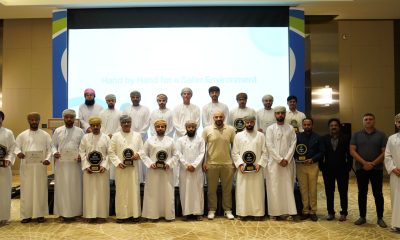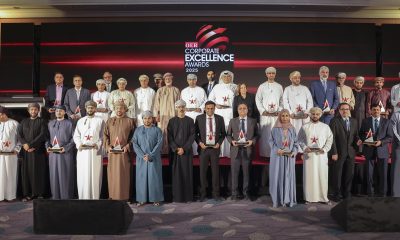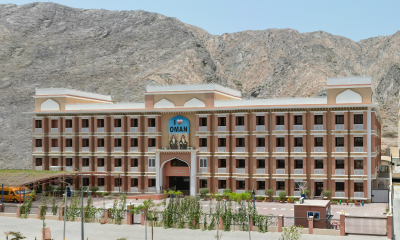Oman 2015
Development on a war footing
The Sultanate has undertaken a series of measures to raise both power generation and water desalination capacities to meet the ever growing demand, especially in the northern region.

The Sultanate has undertaken a series of measures to raise both power generation and water desalination capacities to meet the ever growing demand, especially in the northern region.
QUICK GLANCE
Three multinational energy giants, along with their joint venture partners, have submitted bids for developing Oman’s biggest gas-fired power plant.
The Sur IPP, which started operation early this year, added 2,000 megawatt of power.
The average annual growth in power demand in the country for the next seven years within the areas of MIS is projected at 10 per cent.
The demand for potable water in Oman’s northern region is projected to grow by six per cent per annum in the next five-year horizon.
The recent commissioning of Al Ghubra desalination plant, which has an installed capacity of 191,000 cubic meter per day, has given the much-needed relief to water shortage.
The recent disruptions in power and water supplies in Muscat and Sohar regions have prompted the authorities to speed up the development of new gigantic projects. The plans to build Oman’s biggest gas-fired power plant within the main interconnected system (MIS) region is reaching awarding stage. Three multinational energy giants, along with their joint venture partners, have submitted bids for developing Oman’s biggest gas-fired power plant, coming up in two locations, with a combined generation capacity of 2,600 megawatts. Among these, two Japanese firms that are leading consortiums are Marubeni and Mitsui, while French firm Engie has also submitted the bid. The projects, which will lead to a jump in power generation, are planned one each in Ibri and Sohar. According to the plan, the project will partially go on stream by 2017, while the full capacity will be ready by 2018.
The gigantic project is for meeting the growing demand for electricity, mostly driven by a surging population in the country that touched 4.22 million recently. Apart from population growth, industrial consumption and tourism development projects also accelerate the growth in consumption of power in the northern region. The $1.5 billion-power project is aimed at meeting demand within the MIS region, which include throughout the Governorates of Muscat and Buraymi, and most of the Governorates of Al Batinah North, Al Batinah South, Al Dakhiliyah, Al Sharqiyah North, Al Sharqiyah South and Al Dhahirah, serves around 736,000 electricity customers.
Another independent power project with a generation capacity of 100 megawatt is also under construction in Musandam. Further, OPWP early this year awarded the second IPP in Salalah with a generation capacity of 445 megawatt to a consortium of Japan’s Mitsui & Co, Saudi Arabia’s ACWA Power and Dhofar International Development and Investment Holding. The consortium also took over the existing Dhofar Power project, which has a capacity of 273 megawatt, taking the total capacity to 718 megawatt.
The Sur IPP, which started operation early this year, added 2,000 megawatt of power, taking the total power generation capacity of the country to 7,000 megawatt. The average annual growth in power demand in the country for the next seven years within the areas of MIS is projected at 10 per cent, from 2,592 megawatt in 2013 to 5,023 megawatt in 2020, according to a seven-year outlook for power demand released by Oman Power and Water Procurement Company (OPWP).
However, peak demand growth, under the demand forecast, is expected at about 11 per cent per annum, from 4,455 megawatt in 2013 to 9,133 megawatt in 2020. In Salalah region, which covers around 77,000 electricity customers, the peak demand is expected to grow at 10 per cent per year, from 420 megawatt in 2013 to 800 megawatt in 2020. And the average demand is projected to grow from 282 megawatt in 2013 to 553 megawatt in 2020.
Electricity transmission and distribution firms are also investing heavily in grid substations and transmission lines. For instance, as much as RO150 million investment is planned by the Muscat Electricity Distribution Company (MEDC) for the next three years. As per the plan, the company has been investing RO50 million per year as part of an ambitious investment plan for 2015-2017 period to support a growing grid load and reach out to more customers.
The additional investments are required for enhancing distribution network to meet power demand from additional customers in newly developed residential areas and to meet the increasing demand due to higher intensity of consumption. MEDC has a customer base of 260,000 and the number of customers is growing by 8-10 per cent per annum.
Likewise, around RO153 million will be invested by Rural Areas Electricity Company (Raeco) in the next three years for raising power generation capacity, transmission lines and distribution network in different parts of the country. Of the total investment, as much as 60 per cent of the investment is for power projects and 40 per cent for developing transmission lines.
Power generation capacity of Raeco will be raised by 145megawatt under the plan, taking the total capacity to 427 megawatt by end-2017. Presently, the company has around 29,875 customers, which will go up to 45,000 within the next five years.
Raeco is also focusing on renewable energy projects, which will reduce dependence on diesel fuel in the long-run. As much as 25 per cent or around 90 megawatt power will be from renewable energy projects, especially solar energy, within the next five years. Raeco recently announced commencement of power generation from Oman’s first commercial solar power project in Al Mazyona in South Oman. In another move, Raeco is developing a 50 megawatt wind project in Salalah in collaboration with Abu Dhabi’s Masdar, which could potentially be operational around 2018.
In fact, the government policy is to encourage private sector investment in renewable energy projects on either power purchase agreement basis or as an independent power project. The country’s privatisation effort in power and water sector was a great success as the private sector investment, mostly brought in by international power producers, the sector has touched $7 billion so far.
Oman government is contemplating to allow independent power producers to sell electricity in spot market as well in 2020. Spot market, an alternative route for power producers to sell electricity to the state-owned procurement company outside a long-term power purchase agreement, will enhance efficiency within the sector. As part of the move, OPWP has recently appointed John Mather as project manager for implementing a new spot market pricing system.
WATER SECTOR
The demand for potable water in Oman’s northern region is projected to grow by six per cent per annum in the next five-year horizon, from 238 million cubic metres in 2013 to 349 million cubic metres in 2020. This compares to the previous seven-year forecasts in which average annual growth was in the range of three to five per cent. A combination of population growth and industrial development, including tourism projects, is cited as a major reason for the growth in demand for potable water. In Salalah region, the water demand is projected to grow at eight per cent, and peak water demand to increase from 75,000 cubic metres per day in 2013 to 132,000 cubic metres per day in 2020.
Plans are afoot to develop several major water desalination plants. Tender has already been floated for conducting initial site studies for building Salalah and Sharqiyah independent water projects. Both desalination projects will be built by two private developers who win the concession from Oman government. The Salalah desalination project will have a capacity of 20 million imperial gallon water per day. These projects, which are expected to come on stream within four years, will meet the growing demand for water.
In Salalah region, the water demand is projected to grow at eight per cent – demand to increase from 75,000 cubic meters per day in 2013 to 132,000 cubic meters per day in 2020. The Salalah independent water and power project, with capacity 68,190 cubic meters per day, is already at maximum output and demand exceeds the available supply of desalinated water. Three other water projects — expansion of desalination projects of ACWA Power and Sur project and a new IWP in Qurayyat — are in different stages of development. These are part of several water desalination projects planned by the state-owned OPWP to substantially raise the overall capacity of desalinated water in Oman.
The proposed Qurayyat independent water project, developed by a consortium of Singapore’s Hyflux and National Power and Water Co, is going to have a designed capacity of 200,000 cubic metres per day (44 MIGD) of potable water. The Qurayyat project is scheduled to commence commercial operations by May 2017, under a 20-year water purchase agreement with OPWP. The recent commissioning of Al Ghubra desalination plant, which has an installed capacity of 191,000 cubic meter per day, has given the much-needed relief to water shortage.
-

 Banking & Finance2 weeks ago
Banking & Finance2 weeks agoOman Oil Marketing Company Concludes Its Annual Health, Safety, Environment, and Quality Week, Reaffirming People and Safety as a Top Priority
-

 Economy2 months ago
Economy2 months agoMaal Card: What Oman’s New National Payment Card Means for Everyday Users
-

 Events2 months ago
Events2 months agoOER Corporate Excellence Awards 2025 Honours Entities and Innovations in Oman
-

 News2 months ago
News2 months agoSheikh Suhail Bahwan, Chairman of Suhail Bahwan Group, Passes Away
-

 News1 month ago
News1 month agoOIG Appoints New CEO to Lead Its Next Chapter of Excellence
-

 Economy2 months ago
Economy2 months agoOman Unveils Official Omani Rial Symbol in Landmark Move to Boost Global Currency Presence
-

 News1 month ago
News1 month agoReport: How India & The Middle East Are Exploiting Immense Economic Synergies
-

 Uncategorized1 month ago
Uncategorized1 month agoOman’s ISWK Cambridge Learners Achieve ‘Top in the World’ and National Honours in June 2025 Cambridge Series



























You must be logged in to post a comment Login